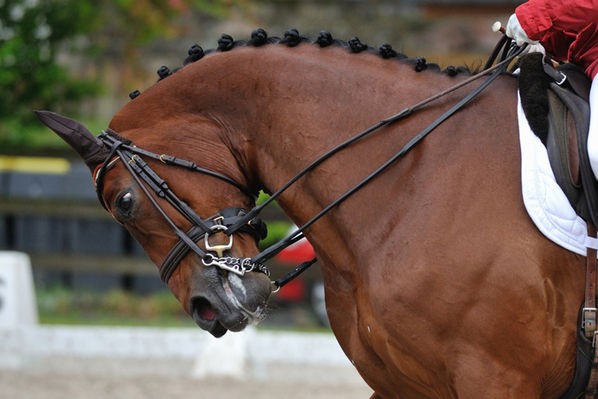
Impact of head-neck positions on the behaviour of horses
The head-neck-position of dressage horses are commonly subject to welfare debates and much controversy exists regarding what can be considered an ‘appropriate’ head-neck-position (HNP). There is an urgent need for an objective assessment of the implication of different head-neck-positions. Therefore, the objective of this study was to assess the prevalence of different HNP in the field, the behavioural reactions of horses during riding in relation to HNP and the relation between the HNP and performance marks achieved in the competition.
A total of 171 horses were selected during dressage competitions according to their head-neck-position and were categorised in three possible HNP based on the degree of flexion. The behaviour of the horses was evaluated for three minutes in the warm-up area and competition arena. To determine the proportion of each HNP an additional 355 horses were scanned every 15 minutes in the warm-up area.
Results showed that 69% of the 355 horses were ridden with their nasal planes behind the vertical in the warm-up area. These horses showed significantly more conflict behaviour than horses with their nose held in front of the vertical (12% of 355 horses). The other 19% were ridden at or in front of the vertical.
Horses during competition showed a less flexed HNP during competition compared to warm-up. At the higher levels a HNP behind the vertical was not penalised with lower marks compared to the lower levels. Horses in higher classes showed more conflict behaviour than those in lower classes.
The authors concluded that horses are frequently ridden at dressage competition with their nasal planes behind the vertical. Furthermore, the results indicate that horses show conflict behaviour more frequently when ridden with an HNP behind the vertical. Therefore, it is suggested that the flexed HNP itself rather than the rider’s skills or the training level of the horse is the main factor inducing conflict behaviour.
> From: Kienapfel et al., PLoS ONE 9 (2014) 1-7. All rights reserved to Kienapfel et al.. Click here for the online summary.


